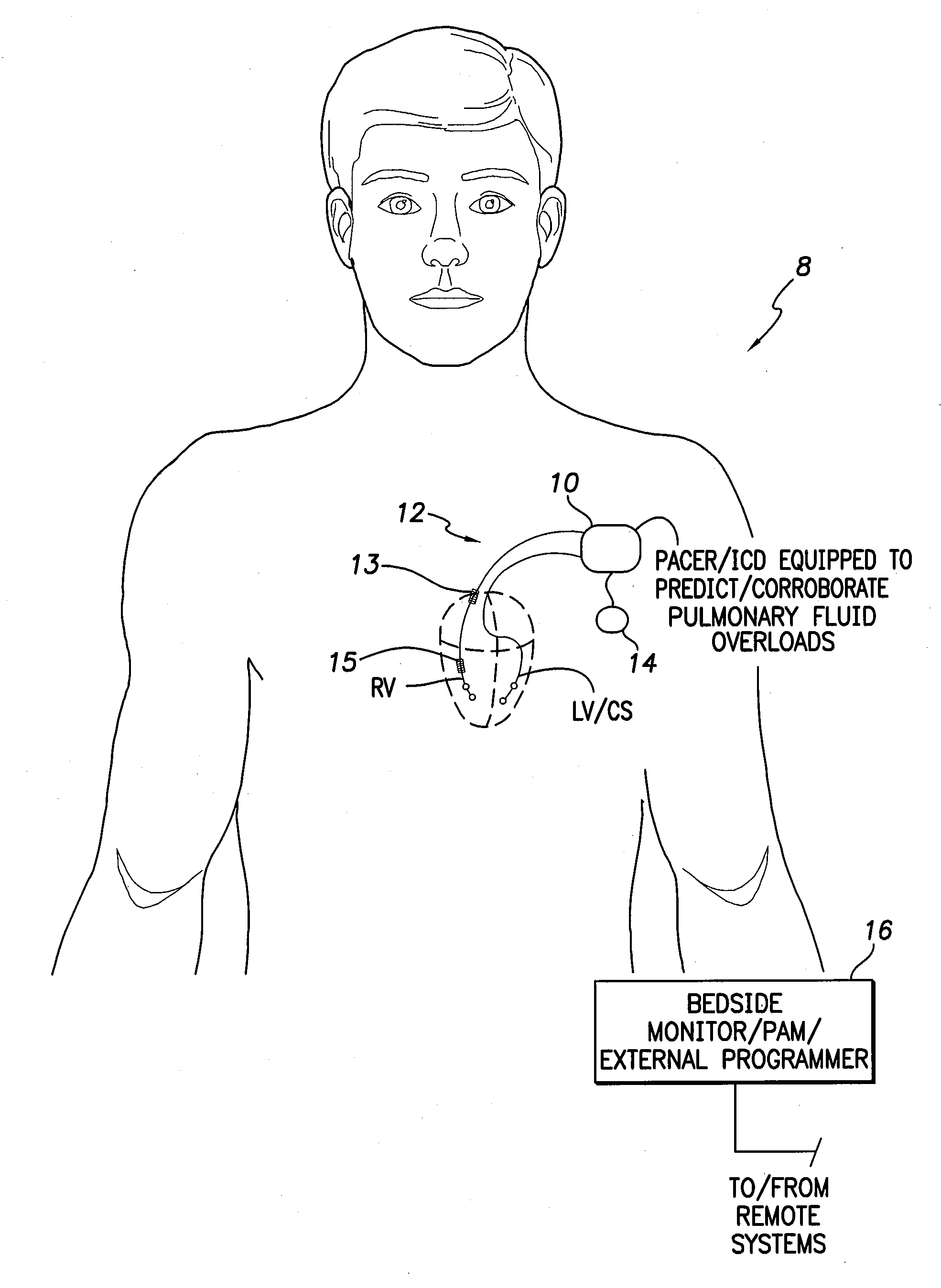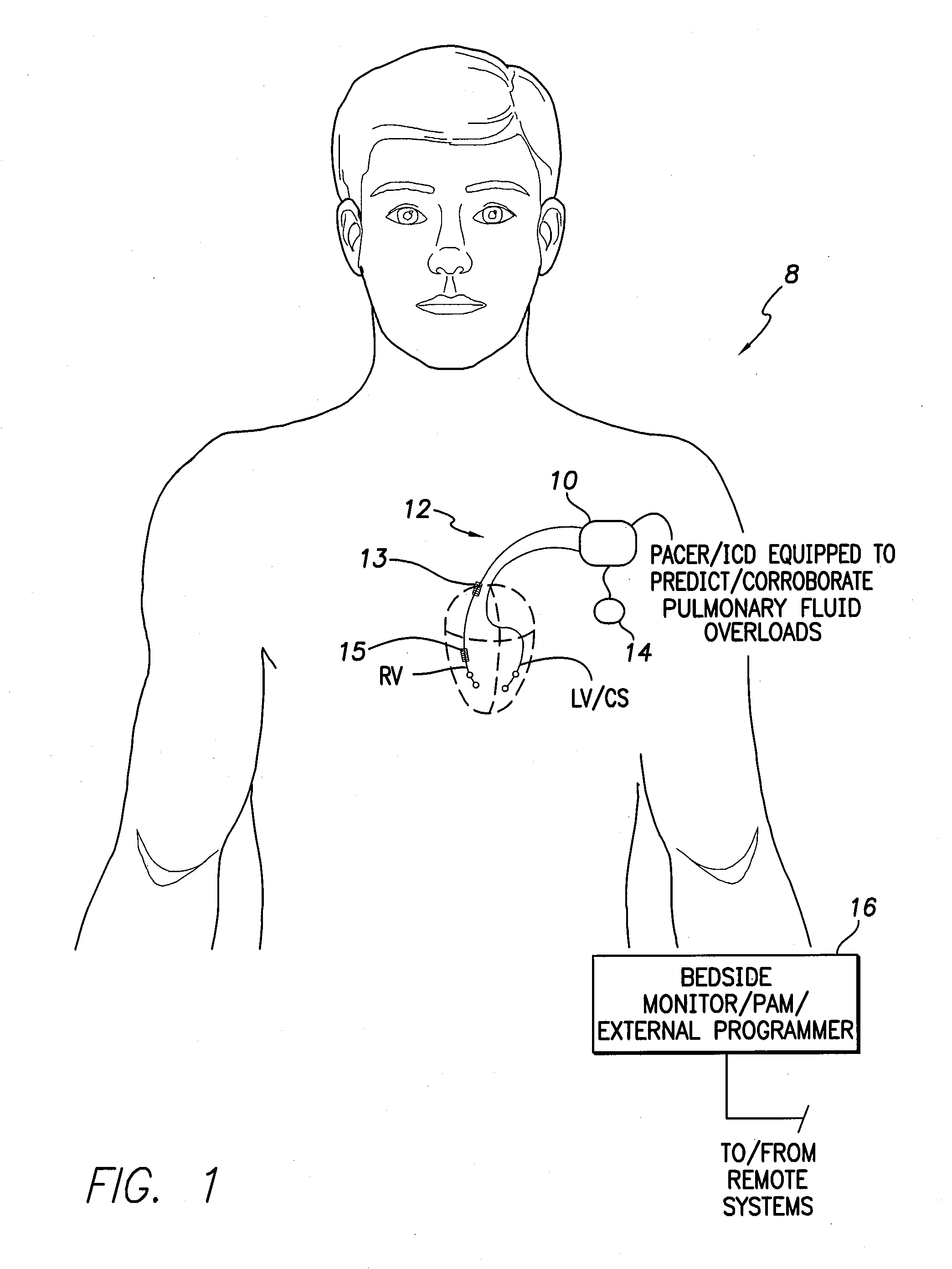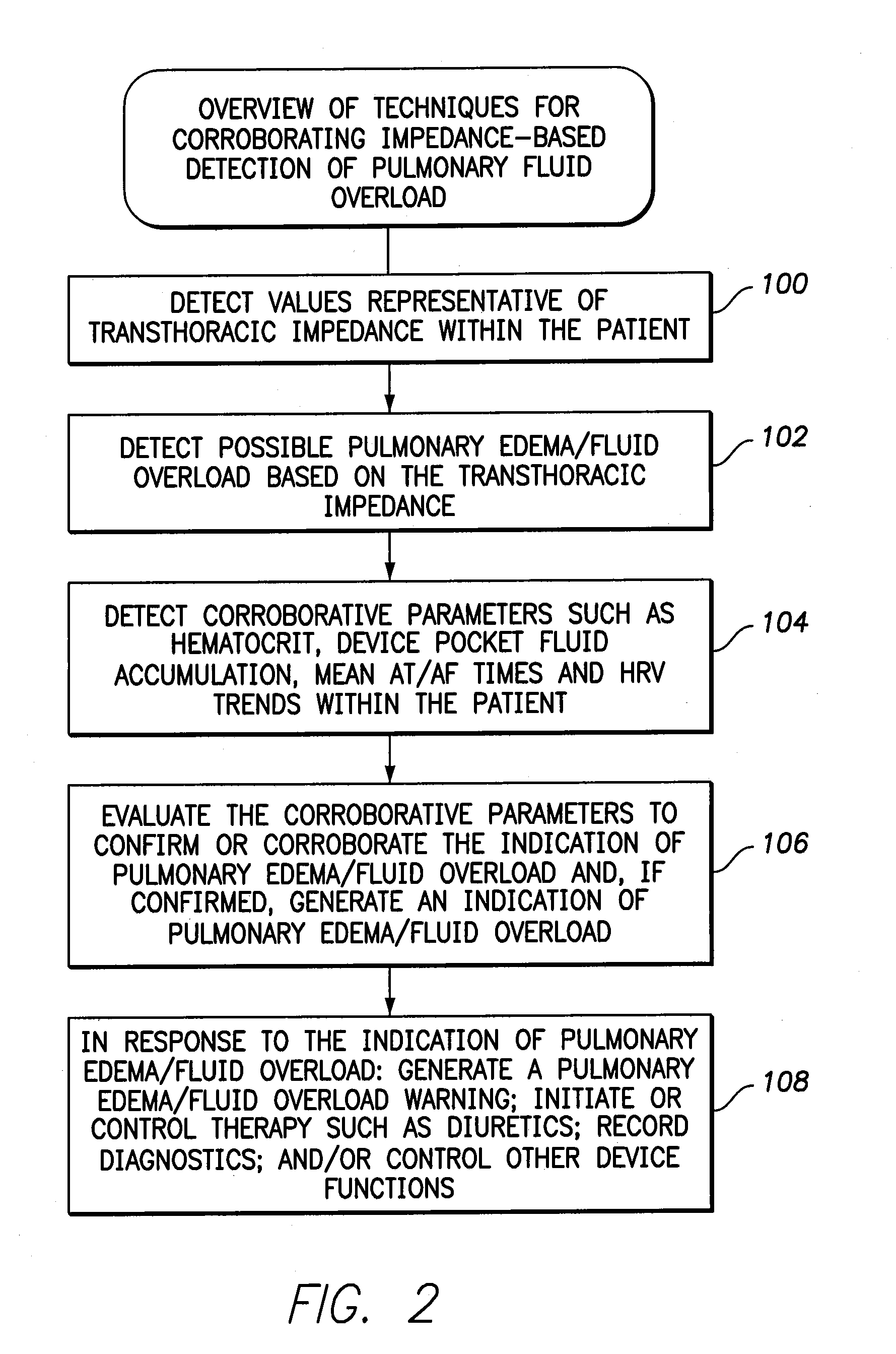Systems and methods for predicting and corroborating pulmonary fluid overloads using an implantable medical device
a medical device and pulmonary fluid technology, applied in the field of implantable medical devices, can solve the problems of impaired arterial circulation, deprived vital organs of oxygen and nutrients, and insufficient ejection or filling of blood ventricles, so as to reduce false positives or avoid overload, the effect of reducing false positives
- Summary
- Abstract
- Description
- Claims
- Application Information
AI Technical Summary
Benefits of technology
Problems solved by technology
Method used
Image
Examples
Embodiment Construction
[0034]The following description includes the best mode presently contemplated for practicing the invention. This description is not to be taken in a limiting sense but is made merely to describe general principles of the invention. The scope of the invention should be ascertained with reference to the issued claims. In the description of the invention that follows, like numerals or reference designators will be used to refer to like parts or elements throughout.
Overview of Implantable System
[0035]FIG. 1 illustrates an implantable medical system 8 capable of detecting predicting and corroborating a pulmonary edema fluid overload based on various parameters such as HRV or mean AT / AF times. The system is also capable of titrating dosages of diuretics or other medications in response thereto, as well as performing other therapeutic or diagnostic functions. Still further, the system may be equipped to detect changes in hematocrit or device pocket fluids. To these ends, medical system 8 i...
PUM
 Login to View More
Login to View More Abstract
Description
Claims
Application Information
 Login to View More
Login to View More - R&D
- Intellectual Property
- Life Sciences
- Materials
- Tech Scout
- Unparalleled Data Quality
- Higher Quality Content
- 60% Fewer Hallucinations
Browse by: Latest US Patents, China's latest patents, Technical Efficacy Thesaurus, Application Domain, Technology Topic, Popular Technical Reports.
© 2025 PatSnap. All rights reserved.Legal|Privacy policy|Modern Slavery Act Transparency Statement|Sitemap|About US| Contact US: help@patsnap.com



